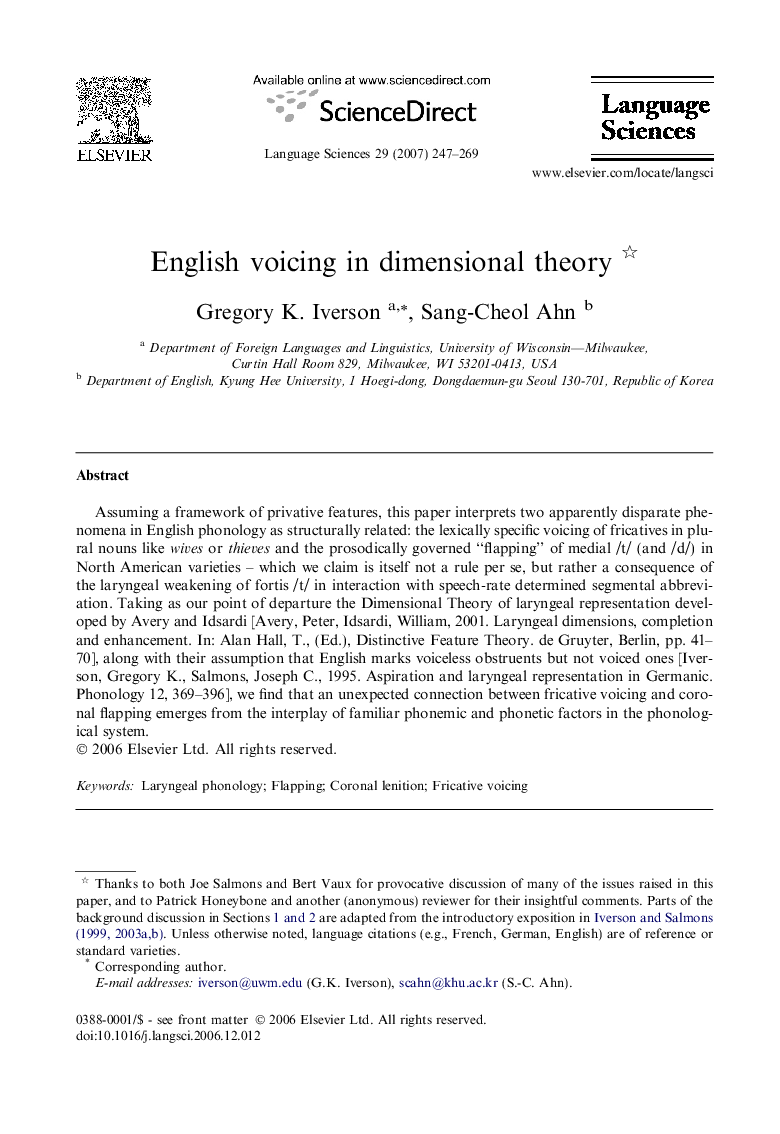| Article ID | Journal | Published Year | Pages | File Type |
|---|---|---|---|---|
| 1103414 | Language Sciences | 2007 | 23 Pages |
Abstract
Assuming a framework of privative features, this paper interprets two apparently disparate phenomena in English phonology as structurally related: the lexically specific voicing of fricatives in plural nouns like wives or thieves and the prosodically governed “flapping” of medial /t/ (and /d/) in North American varieties - which we claim is itself not a rule per se, but rather a consequence of the laryngeal weakening of fortis /t/ in interaction with speech-rate determined segmental abbreviation. Taking as our point of departure the Dimensional Theory of laryngeal representation developed by Avery and Idsardi [Avery, Peter, Idsardi, William, 2001. Laryngeal dimensions, completion and enhancement. In: Alan Hall, T., (Ed.), Distinctive Feature Theory. de Gruyter, Berlin, pp. 41-70], along with their assumption that English marks voiceless obstruents but not voiced ones [Iverson, Gregory K., Salmons, Joseph C., 1995. Aspiration and laryngeal representation in Germanic. Phonology 12, 369-396], we find that an unexpected connection between fricative voicing and coronal flapping emerges from the interplay of familiar phonemic and phonetic factors in the phonological system.
Keywords
Related Topics
Social Sciences and Humanities
Arts and Humanities
Language and Linguistics
Authors
Gregory K. Iverson, Sang-Cheol Ahn,
